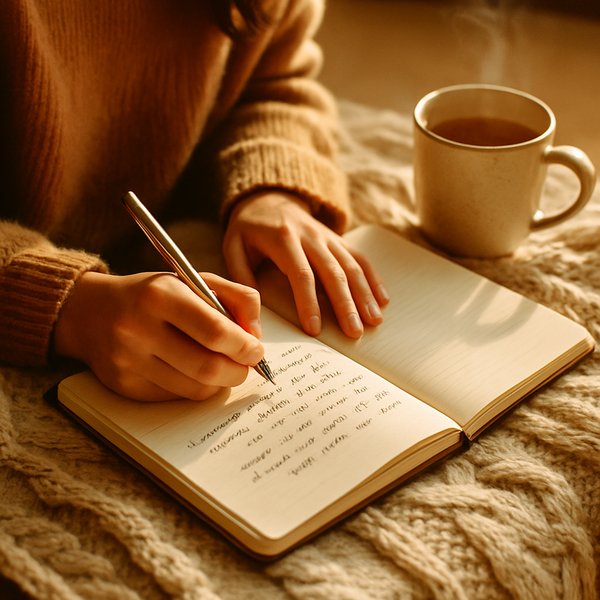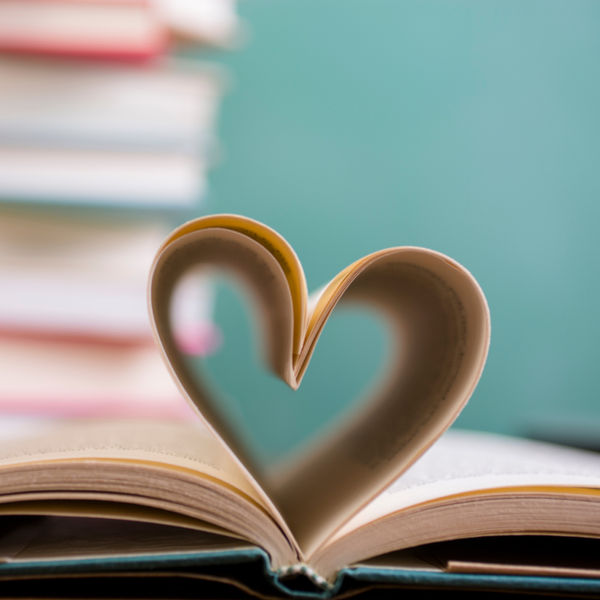Creative writing is an artistic expression that allows writers to convey their thoughts, emotions, and stories in imaginative ways.
Unlike academic writing, which focuses on factual information and structured formats, creative writing emphasizes originality, creativity, and the use of literary devices.
This article explores the four primary types of creative writing, providing insights into their characteristics, purposes, and techniques.
Key Takeaways:
- Creative writing encompasses various forms, each with unique characteristics and purposes.
- Understanding the different types of creative writing can enhance your writing skills and broaden your creative horizons.
- Mastering creative writing involves practice, experimentation, and a deep understanding of literary devices and techniques.
Short Stories
Short stories are a popular form of creative writing that typically range from 1,000 to 20,000 words.
They focus on a single plot, a few characters, and a central theme.
Short stories are designed to be read in one sitting, making them an excellent medium for conveying powerful messages and emotions concisely.
Short stories often employ literary devices such as symbolism, foreshadowing, and irony to enhance the narrative.
Writers use these techniques to create memorable characters, build tension, and engage the reader's imagination.
Examples of famous short stories include "The Lottery" by Shirley Jackson and "The Tell-Tale Heart" by Edgar Allan Poe.
Personal Essays
Personal essays are written accounts of the writer's experiences, thoughts, and reflections.
They are often introspective and explore themes such as identity, relationships, and personal growth.
Personal essays allow writers to connect with their readers on a deeper level by sharing their unique perspectives and emotions.
In personal essays, the writer's voice and writing style are crucial.
The use of vivid descriptions, anecdotes, and figurative language helps to create an engaging and relatable narrative.
Personal essays can be found in literary magazines, blogs, and anthologies, and they often resonate with readers who seek authentic and heartfelt stories.
Poetry
Poetry is a form of creative writing that uses rhythm, rhyme, and imagery to evoke emotions and convey ideas.
Poems can vary in length, structure, and style, ranging from traditional forms like sonnets and haikus to free verse and prose poetry.
Poetry allows writers to experiment with language and express their thoughts in a condensed and impactful manner.
Writing poetry requires a keen understanding of literary devices such as metaphor, simile, and alliteration.
Poets often use these techniques to create vivid imagery and evoke strong emotions in their readers.
Famous poets like Emily Dickinson, Robert Frost, and Maya Angelou have left a lasting impact on the literary world with their powerful and evocative works.
Creative Non-Fiction
Creative non-fiction combines factual information with creative storytelling techniques.
This genre includes memoirs, biographies, travel writing, and essays that explore real-life events and experiences.
Creative non-fiction allows writers to present factual content in an engaging and compelling manner, making it accessible and enjoyable for readers.
In creative non-fiction, the writer's ability to weave narrative elements with factual information is essential.
Techniques such as character development, dialogue, and descriptive writing help to bring real-life stories to life.
Notable examples of creative non-fiction include "The Glass Castle" by Jeannette Walls and "Into the Wild" by Jon Krakauer.
Importance of Character Development
Character development is a key element in creative writing, as it helps to create memorable and relatable characters.
Well-developed characters have distinct personalities, motivations, and arcs that drive the plot forward and engage the reader.
Writers use various techniques, such as dialogue, inner monologue, and actions, to reveal their characters' traits and growth.
In short stories and novels, character development is crucial for building tension and creating emotional connections with the reader.
Characters who undergo significant changes or face internal conflicts often leave a lasting impression.
For example, in J.K. Rowling's "Harry Potter" series, the protagonist's growth and development are central to the story's appeal.
Role of Literary Devices
Literary devices are tools that writers use to enhance their writing and convey deeper meanings.
These devices include metaphor, simile, personification, and hyperbole, among others.
By incorporating literary devices, writers can create vivid imagery, evoke emotions, and add layers of complexity to their work.
In poetry, literary devices play a significant role in creating rhythm and enhancing the overall impact of the poem.
For instance, the use of alliteration and assonance can create musicality, while metaphors and similes can add depth to the imagery.
In prose, literary devices help to create a more engaging and immersive reading experience.
Art of Writing Dialogue
Dialogue is an essential component of creative writing, as it helps to reveal character traits, advance the plot, and create tension.
Writing effective dialogue requires an understanding of how people speak and interact in real life.
Dialogue should sound natural and reflect the characters' personalities and emotions.
In short stories and novels, dialogue can be used to show rather than tell, allowing readers to infer information about the characters and their relationships.
For example, in Ernest Hemingway's "Hills Like White Elephants," the dialogue between the characters reveals their underlying conflict and emotions without explicitly stating them.
Power of Descriptive Writing
Descriptive writing is a technique that involves using vivid and sensory details to create a clear and immersive picture in the reader's mind.
This type of writing is essential for setting the scene, creating atmosphere, and bringing characters and events to life.
Descriptive writing can be found in various forms of creative writing, including short stories, novels, and poetry.
Writers use descriptive writing to engage the reader's senses and imagination.
By incorporating details such as sights, sounds, smells, tastes, and textures, writers can create a more vivid and immersive reading experience.
For example, in F. Scott Fitzgerald's "The Great Gatsby," the descriptive passages paint a vivid picture of the opulent and decadent world of the 1920s.
Use of Figurative Language
Figurative language is a key element of creative writing that involves using words and phrases in a non-literal way to create deeper meanings and evoke emotions.
Common types of figurative language include metaphors, similes, personification, and hyperbole.
Figurative language adds richness and depth to writing, making it more engaging and impactful.
In poetry, figurative language is often used to create vivid imagery and convey complex emotions.
For example, in Robert Frost's poem "The Road Not Taken," the metaphor of the diverging roads represents the choices and decisions we face in life.
In prose, figurative language can enhance descriptions and add layers of meaning to the narrative.
Craft of Writing Poetry
Writing poetry is an art form that requires a deep understanding of language, rhythm, and imagery.
Poets use various techniques, such as meter, rhyme scheme, and line breaks, to create musicality and enhance the overall impact of the poem.
Poetry allows writers to express their thoughts and emotions in a condensed and powerful manner.
To write poetry, it is essential to experiment with different forms and styles.
Traditional forms, such as sonnets and haikus, have specific structures and rules, while free verse allows for more flexibility and creativity.
Poets often draw inspiration from their own experiences, emotions, and observations, using vivid imagery and figurative language to convey their messages.
Impact of Creative Writing on Mental Health
Creative writing can have a positive impact on mental health by providing an outlet for self-expression and emotional release.
Writing about personal experiences, thoughts, and emotions can help individuals process their feelings and gain a better understanding of themselves.
Creative writing can also be a therapeutic activity that promotes relaxation and reduces stress.
Many writers use creative writing as a form of self-care and personal growth.
By exploring their inner thoughts and emotions through writing, they can gain insights and find healing.
For example, writing personal essays or journal entries can help individuals reflect on their experiences and make sense of their emotions.
Role of Free Writing
Free writing is a technique that involves writing continuously without worrying about grammar, punctuation, or structure.
The goal of free writing is to unleash creativity and generate ideas without self-censorship.
This technique can be particularly useful for overcoming writer's block and discovering new perspectives and insights.
Free writing can be practiced regularly as a warm-up exercise or as a way to explore new ideas and themes.
By allowing thoughts to flow freely, writers can tap into their subconscious and uncover hidden thoughts and emotions.
Free writing can also help writers develop their unique voice and writing style.
Art of Writing Novels
Writing novels is a complex and rewarding endeavor that requires careful planning, creativity, and dedication.
Novels are long-form works of fiction that typically range from 50,000 to 100,000 words or more.
They involve intricate plots, well-developed characters, and detailed settings that immerse the reader in the story.
To write a novel, it is essential to outline the plot, develop the characters, and create a detailed setting.
Writers often spend months or even years crafting their novels, revising and refining their work to achieve the desired impact.
Famous novelists like Jane Austen, Charles Dickens, and J.K. Rowling have created timeless works that continue to captivate readers.
Significance of Writing Style
Writing style refers to the unique way in which a writer expresses their thoughts and ideas.
It encompasses elements such as word choice, sentence structure, tone, and voice.
A writer's style can greatly influence the reader's experience and engagement with the text.
Developing a distinctive writing style requires practice and experimentation.
Writers can study the works of their favorite authors to understand different styles and techniques.
By honing their writing style, writers can create a more authentic and compelling narrative that resonates with their readers.
Role of Literary Devices in Creative Writing
Literary devices are essential tools that enhance the quality and depth of creative writing.
These devices include metaphor, simile, personification, and hyperbole, among others.
By incorporating literary devices, writers can create vivid imagery, evoke emotions, and add layers of complexity to their work.
In poetry, literary devices play a significant role in creating rhythm and enhancing the overall impact of the poem.
For instance, the use of alliteration and assonance can create musicality, while metaphors and similes can add depth to the imagery.
In prose, literary devices help to create a more engaging and immersive reading experience.
Importance of Character Dialogue
Character dialogue is a crucial element of creative writing, as it helps to reveal character traits, advance the plot, and create tension.
Writing effective dialogue requires an understanding of how people speak and interact in real life.
Dialogue should sound natural and reflect the characters' personalities and emotions.
In short stories and novels, dialogue can be used to show rather than tell, allowing readers to infer information about the characters and their relationships.
For example, in Ernest Hemingway's "Hills Like White Elephants," the dialogue between the characters reveals their underlying conflict and emotions without explicitly stating them.
Power of Descriptive Essays
Descriptive essays are a form of creative writing that focuses on providing detailed descriptions of a person, place, object, or event.
The goal of a descriptive essay is to create a vivid and immersive picture in the reader's mind.
Writers use sensory details, figurative language, and vivid imagery to achieve this effect.
In descriptive essays, the writer's ability to engage the reader's senses is crucial.
By incorporating details such as sights, sounds, smells, tastes, and textures, writers can create a more vivid and immersive reading experience.
For example, in F. Scott Fitzgerald's "The Great Gatsby," the descriptive passages paint a vivid picture of the opulent and decadent world of the 1920s.
Role of Flash Fiction
Flash fiction is a form of creative writing that tells a complete story in a very short amount of words, typically under 1,000.
Despite its brevity, flash fiction can be powerful and impactful, often focusing on a single moment, character, or theme.
This form of writing challenges writers to be concise and creative, making every word count.
Flash fiction often relies on strong imagery, symbolism, and a twist ending to leave a lasting impression on the reader.
Writers must carefully choose their words and structure their stories to convey meaning and emotion effectively.
Flash fiction can be a great exercise for writers looking to hone their skills and experiment with different genres and styles.
Art of Writing Song Lyrics
Writing song lyrics is a unique form of creative writing that combines poetry and music.
Song lyrics often use rhyme, rhythm, and figurative language to convey emotions and tell a story.
Writing effective song lyrics requires an understanding of musical structure and the ability to create catchy and meaningful phrases.
Songwriters often draw inspiration from their own experiences, emotions, and observations.
They use literary devices such as metaphor, simile, and personification to create vivid imagery and evoke emotions.
Famous songwriters like Bob Dylan, Leonard Cohen, and Taylor Swift have mastered the art of writing lyrics that resonate with listeners.
Art of Writing Letters
Letter writing is a traditional form of creative writing that involves composing written messages to communicate with others.
Letters can be personal, professional, or creative, and they often reflect the writer's thoughts, emotions, and personality.
Writing letters allows for a more intimate and thoughtful form of communication.
In creative writing, letters can be used as a narrative device to reveal character traits, advance the plot, and create tension.
Epistolary novels, such as "Dracula" by Bram Stoker and "The Color Purple" by Alice Walker, use letters to tell the story and provide insight into the characters' thoughts and emotions.
Role of Speech Writing
Speech writing is a form of creative writing that involves composing speeches for various occasions, such as weddings, award ceremonies, and political events.
Writing an effective speech requires an understanding of the audience, the purpose of the speech, and the desired impact.
Speechwriters use rhetorical devices, anecdotes, and persuasive language to engage and inspire their audience.
In creative writing, speeches can be used as a narrative device to reveal character traits, advance the plot, and create tension.
Famous speeches, such as Martin Luther King Jr.'s "I Have a Dream" and Winston Churchill's "We Shall Fight on the Beaches," have left a lasting impact on history and continue to inspire people today.
Power of Prose Poetry
Prose poetry is a form of creative writing that combines elements of prose and poetry.
It uses poetic techniques, such as imagery, rhythm, and figurative language, within the structure of prose.
Prose poetry allows writers to experiment with language and create powerful and evocative pieces that blur the lines between prose and poetry.
Writing prose poetry requires a deep understanding of both prose and poetry.
Writers must carefully choose their words and structure their sentences to create a rhythmic and impactful piece.
Prose poetry can be a great way for writers to explore new forms and push the boundaries of traditional writing.
Role of Free Verse in Poetry
Free verse is a form of poetry that does not adhere to a specific rhyme scheme or meter.
It allows poets to experiment with language, structure, and rhythm, creating a more flexible and expressive form of poetry.
Free verse can be used to convey complex emotions and ideas in a more natural and conversational tone.
Writing free verse requires an understanding of poetic techniques and the ability to create rhythm and flow without the constraints of traditional forms.
Poets often use vivid imagery, figurative language, and line breaks to create a powerful and evocative piece.
Famous poets like Walt Whitman and Langston Hughes have used free verse to create some of their most memorable works.
Role of Journaling in Creative Writing
Journaling is a form of creative writing that involves keeping a written record of personal thoughts, experiences, and reflections.
It can be a therapeutic activity that promotes self-expression and emotional release.
Journaling allows writers to explore their inner thoughts and emotions, gain insights, and find healing.
Many writers use journaling as a way to develop their writing skills and generate ideas for their creative projects.
By writing regularly, they can experiment with different styles and techniques, and discover their unique voice.
Journaling can also be a valuable tool for personal growth and self-discovery.
Impact of Creative Writing on Non-Reading Audiences
Creative writing can have a significant impact on non-reading audiences by providing an engaging and accessible form of storytelling.
Through mediums such as film, theater, and spoken word, creative writing can reach a wider audience and create a more immersive and impactful experience.
Writers who create scripts for film and theater must consider the visual and auditory elements of their work.
They use dialogue, stage directions, and descriptive writing to bring their stories to life on screen or stage.
Spoken word poets use performance techniques, such as voice modulation and body language, to enhance their poetry and connect with their audience.
Impact of Creative Writing on Daily Life
Creative writing can have a significant impact on daily life by providing an outlet for self-expression and creativity.
Writing about personal experiences, thoughts, and emotions can help individuals process their feelings and gain a better understanding of themselves.
Creative writing can also be a therapeutic activity that promotes relaxation and reduces stress.
Many people incorporate creative writing into their daily routines through journaling, writing poetry, or working on short stories.
By making time for creative writing, individuals can explore their creative side and find joy and fulfillment in the process.
Creative writing can also improve communication skills and boost confidence.
Unleashing Creative Potential: The Final Word
Creative writing is a boundless realm where imagination meets expression, offering endless opportunities to explore and convey the human experience.
From the concise power of short stories to the introspective depth of personal essays, the rhythmic beauty of poetry, and the factual yet engaging narrative of creative non-fiction, each form of creative writing provides a unique avenue for storytelling.
By understanding and mastering these different types, you can enhance your writing skills, broaden your creative horizons, and connect more deeply with your readers.
So, pick up your pen, let your imagination soar, and embark on your creative writing journey today.
The world is waiting to hear your story.
Interested in learning more about creative writing? Check out Reedsy's video!
Want even more content about creativity and art?
Be sure to check out all of our creative chronicles!
Love writing and considering creating your own written masterpieces?
Check out some of our other articles:
-How do I start basic writing?
-How do I write a short story?
-What is a 100 word story called?







